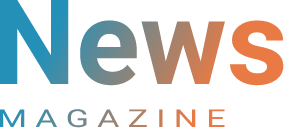The 5 Pillars of Leverage in Business: Maximizing Growth and Efficiency
In the present scenario of the business world, being able to use resources to the maximum level can either make or break an organization. The principle under the title of the 5 pillars of leverage in business is a group of principles which, when executed properly might assist in enhancing the reach of the business, promote its growth with ease and provide the growth it seeks. It is not a matter of preference, however, but a reality that one will have to learn how to work with these pillars if they want to be in operation and know what makes them great.
In this blog post, we’ll look at the 5 pillars of leverage in business. We will discuss their significance, the difference they can make to your business, and how to use them in practice.
What Are the 5 Pillars of Leverage in Business?

The 5 Pillars of Leverage in Business
The 5 pillars of leverage in business refer to strategic areas through which businesses can maximize output with little effort, expenses or resources. Therefore, organizations can become more effective, streamline their production, and build up for a rise in the market. Here’s a breakdown of each pillar.
1. Financial Leverage
Financial leverage is one of the most commonly understood principles in any business. It simply means raising debt for increasing the possible return on investment. In simple words, with financial leverage, a firm can use less money of the firm’s while using more borrowed money in order to meet its desired financial targets. This expansion may be achieved without diminishing control or assuming excessive risks, as long as debt and equity are kept in check.
Read more Details about Financial Leverage
Key Benefits
- Increased ROI: The use of debt to acquire income producing assets means that the business can realize a higher return than if the organization relies only on its equity.
- Business Expansion: Financial leverage allows for growth even without tapping on the company’s available working capital.
- Tax Benefits: Interest paid on borrowed capital can in most cases be claimed as a tax expense thus providing one more merit.
Example
Consider a company that wishes to boost productivity by investing in new equipment. Instead of using its cash reserves, it opts for a loan. The machinery helps boost output, leading to higher profit that more than cover the interest expense on the loan.
2. Human Leverage
Human capital focus under the concept of leverage means maximizing the various value-adding resources in the business to grow. In this case, the aim is to enhance the effectiveness and productivity of the work of people by adequately training the relevant people, allocating the right tasks, and recognizing their talents. Through people, businesses are able to grow without proportionately growing their workforce.
Key Benefits
- Enhanced Output: trained persons are more industrious since they need less attention, therefore increasing operational effectiveness.
- Reduced Expenses: these enables senior management to concentrate on more strategic issues while day to day running of business is done by lower echelons.
- Employee Contentment: Managers assigning tasks and offering progression and growth in the career of the employees contribute to the comfort of the individual and may reduce his propensity to leave the organization.
Example
A company that commits to boosting the careers of its workers can expect enormous benefits as an outcome of that commitment. With more people able to take on more roles, leaders are enabled to concentrate on strategies geared towards business up scaling.
3. Systems and Technology Leverage

Technology has revolutionized the way business is conducted, and using technology appropriately is of paramount importance. Systems and technology leverage concentration is the focus on installing tools, software, and processes to increase efficiency and reduce costs. That way, the organizations will be able to automate repetitive tasks, scale their operations, and serve other processes to result in overall improvement in productivity.
Key Benefits
- Automation: Tasks that have to be performed repeatedly can be mechanized, enabling workers to engage in other more value added activities.
- Scalability: There are systems that enable the expansion of the businesses without a corresponding increase in the costs incurred.
- Data-Driven Decisions: Advanced analytics tools are insights that inform strategic decision making.
Example
Many companies utilize CRM systems to improve the engagement of customers. The CRM can track customer interactions, automate follow-ups, and provide insights, thereby increasing customer satisfaction and retention rates.
4. Marketing and Sales Leverage
Sales and marketing is the pillar to maximize the reach and impact of efforts made by a company in attracting and retaining customers. Marketing and sales, in effect, can reach more with fewer resources or even the same resources. Strategic branding, digital marketing, partnerships, and customer relationship management are the pillars.
Key Benefits
- Higher ROI on Marketing Efforts: Companies get better returns from their marketing spend since they target specific audiences.
- More Customer Relationships: Proper marketing generates customer loyalty, and that eventually translates into repeat business.
- Brand Awareness: The better the marketing leverage, the higher the brand awareness that increases sales.
Example
A firm employing social media marketing tools and automation can reach thousands of customers with targeted advertisements, spending much less than it would have on traditional advertising. This method expands the company’s reach but also improves conversion rates.
5. Time Leverage
leverage of time is the systematization of productivity activities through prioritization, delegation and outsourcing so as to enable concentrating on high value activities. Time is probably the most important resource that any business leader will ever possess. The key to using time well will ensure that you and your team focus on what really matters, increase productivity, and reduce stress.
Key Benefits
- Focus on Strategic Issues: The entrepreneurs will be able to concentrate on developing their business for the long term rather than on day-to-day functioning.
- Enhanced Performance: Delegation and outsourcing allow for fast completion of tasks without overworking the internal resources.
- Optimum Work Life Integration: It is rather smart work than hard work which makes business owners and employees have a good work life balance.
Example
It helps the business owner outsource administrative work to a virtual assistant so that he has more time for strategic planning and interactions with clients that lead to business growth.
Integrating the 5 Pillars of Leverage in Business
To add the 5 pillars of leverage in business it is important to assess your current operations and find out where you have the flexibility to apply leverage. Here’s how.
1. Resources Audit
Leverage would be found in finance, technology, or human resources in order to apply leverage.
2. Set clear goals for each pillar
what you want to achieve. You can include; ROI growth, customers incrimination, even decreasing the cost of operations.
3. Strategy Development

Develop each pillar with a step by step plan. For instance, develop a debt strategy addressing financial leverage or installing CRM for marketing and sales leverages.
4. Monitor Progress
Use KPIs and regular assessments to evaluate how well each pillar is performing and adjust as needed.
5. Invest in Training
For human leverage, focus on team development, delegation, and employee empowerment.
Pros and Cons of Using the 5 Pillars of Leverage in Business
| Pros | Cons |
| Increases productivity with less time and effort | Requires a learning curve and investment |
| Enhances ROI and business growth | May involve risks if not managed properly |
| Improves employee satisfaction and engagement | Over-leveraging, especially financially, can backfire |
| Allows scalability without proportional costs | Success depends on regular monitoring and adjustments |
Important Characteristics and Advantages of the 5 Pillars of Leverage in Business
- Leverage in Finance: Access capital without diluting ownership; gain tax benefits.
- Human Leverage: Optimize talent, boost productivity, and improve satisfaction.
- Technology and Systems: Automate processes, improve precision in data, and aid growth.
- Promotions and Selling: Expand audience reach, deepen commitment to brands, increase purchasing rate.
- Leverage of Time: Focus on plans, raise efficiency, and achieve a proper work-life balance.
FAQs about the 5 Pillars of Leverage in Business
1. What are the five (5) pillars of leverage in business?
Financial leverage, human leverage, systems and technology leverage, marketing and sales leverage, and time leverage, comprise the 5 pillars. Each pillar offers a different way of optimizing resources and improving business performance.
2. What do you mean by financial leverage?
The definition of financial leverage is when the company borrows money in order to enhance ROI. In this way, businesses wire debt into their operations in order to invest into growth changing developments excluding their finances.
3. Why is human leverage important?
The human element in an organization can be optimized for high productivity and therefore, more can be done with less. It is very critical in the creation of a healthy and efficient culture.
4. How does technology assist in business leverage?
Technology enables organizations to eliminate manual processes, simplify the organization, and make use of intelligent decision-making, all of which eliminate expenses and promote growth.
5. Can leveraging these pillars be risky?
Indeed more so with financial leverage. Over leverage can result in too much debt and pressure on resources. Continuous evaluation and tactical approaches are necessary.
Conclusion
Utilization of the 5 pillars of leverage in business in operating systems management processes can enhance the efficiency of operations and promote growth. Ceteris paribus, if you concentrate on targeted practices such as finance, human resources, technology, marketing, and management of time, you can increase the effectiveness of the business without overstretching its resources resulting in its growth.
Read more Article About Tech Trends and other Categories at The Digit Ad



















Post Comment